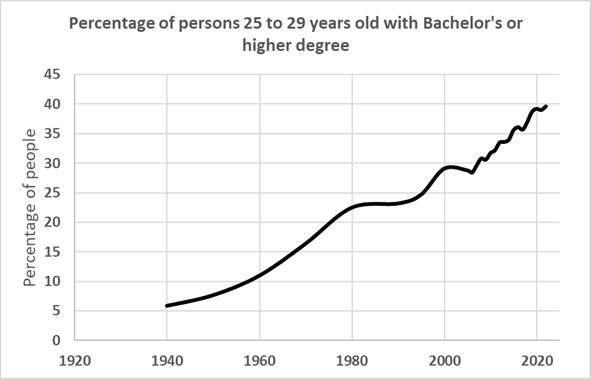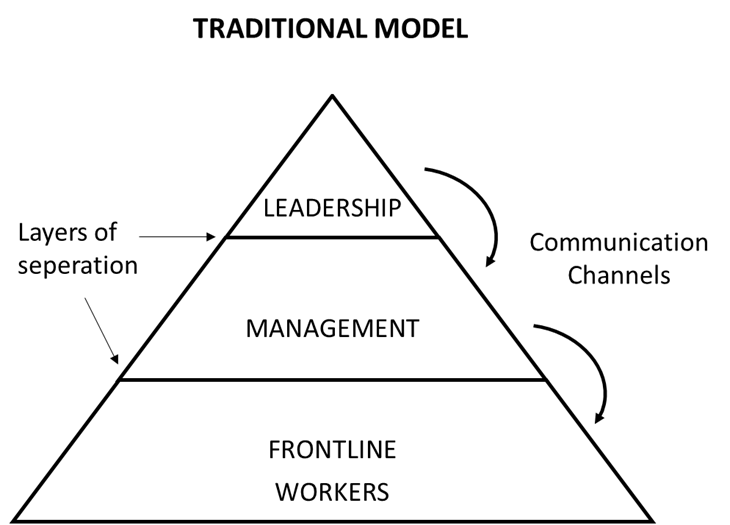The Need for Leadership in the Modern Workplace
The need for leadership has never been greater in corporate culture today. Many of the management practices that people experience today, I believe have come out of the industrial revolution. Just take a look at how the United States, Europe, and much of the modern world has shifted over the past 150 to 200 years.
Industrial revolution
During the industrial revolution railroads, factories to produce goods that simplified life. Chemistry and oil forever changed how we lived and worked because it fueled many of the innovations we use today. Henry Ford perfected the assembly line, offering farm workers the ability to make $5 per day, which was more than a farmer would make. There was also the security of consistent income, despite monotonous work on an assembly line.
With the perfecting of the assembly line, good wages, and decent working hours Ford was able to decrease the cost of the Model T from $825 in 1908 to $260 by 1925. The business case for this type of work brought about a new age where products were affordable to the masses. This led to a revolution of developing new products that changed how people lived by reducing the labor and time to communicate, travel, prepare food, clean, and operate in daily life.
The technological advances made life easier in some respects but life now involved leaving to a place of employment. On a large-scale people went to work in a factory, for an employer. This established at scale, the employee – employer relationship. The objective of those in company leadership was to manage the employee masses. Likely the only other mass management of people in history were militaries and slavery. With the strong British influence on the USA, I suspect the British imperialistic mindset led to the management principles during the industrial revolution and even today.
The information age
The advent of the personal computer in the mid-1970s, coupled with its widespread adoption in the 1980s, fundamentally shifted how people worked. Machinery and automation meant that fewer people were required on the factory floor and more jobs shifted to the office. Computational power, both at home and in the workplace, allowed for faster and more thorough communication. They could complete large amounts of calculations in just a few minutes that would have taken weeks previously. Emails, containing detailed information, could be disseminated in minutes, compared to the time required by the US Postal Service or internal company mail.
An entire new industry was created with new hardware, software, and networking. With the advent of the internet the speed at which the information age grew was exponential. The industrial revolution had taken approximately 75 years to come into maturity, whereas the information age took less than two decades.
The integrated intelligence age
With artificial intelligence (AI) coming into mainstream use in the early to mid-2020’s we are yet again in the advent of a new age, which I will call the integrated intelligence. AI is much like the information age where computers could crunch through large data sets in seconds, AI has the potential to distill down large amounts of information, making decisions and recommendations in seconds that humans may have taken hours, days, or even weeks to process. This is all due to the integration of the collective information across the internet where computational power can process and communicate like a human. This technology is so new the long term impacts on how we work are yet to be defined.
The education shift
During this dramatic shift over the past 100 years the amount of people that are college educated in the United States has gone from a few percent to almost 40% of 25 to 29 year olds in 2022. This means that the workforce is more highly educated and informed than ever before. The educated workforce now has the ability to make informed and science-based decisions. This has resulted in faster technology implementation and adoption.

Source: National Center for Education Statistics
Despite the seismic shifts in how we work and the increase in education levels over the past 150 years, the management model from the industrial revolution has remained largely unchanged in some industries and companies. I believe this is twofold: first, managing is often perceived as easier than leading; and second, management is ingrained in our cultural norms, stemming from principles established 100 to 150 years ago.
The traditional model has been those at the top of an organization, which we call Leadership, then middle Management, lastly the Frontline Workers. Information flows from the top down, where leadership makes the decision, which informs Management. The job of Management is to implement the decisions of Leadership, thereby Managing the Frontline Workers. There are layers of separation where key decisions must go up the chain of command, then back down through the chain before moving forward. Each layer is granted authority by the layer above. Anyone who has worked in a large corporation will tell you that this is the case.

An article from Gallup pointed to the large shift that those in leadership are experiencing. Leaders are feeling the stress and impacts. Gallup’s article stated:
Many leaders might feel wary of communicating before they can speak clearly and confidently about the changes to come. Even so, leaders often need to communicate much more frequently about what they know with certainty and what may yet be unknown. In the absence of communication, employees run the risk of filling the void with narratives that may or may not reflect the reality of the change.
Interestingly, in another article about preventable employee turnover, Gallup stated, “Employees often make exit decisions without proactive communication. Thirty-six percent of voluntary leavers report that they did not talk to anyone before they made the decision to resign.”
Perhaps our traditional hierarchy of company management could benefit from a refresh. People are highly educated. The same technology is available to both the CEO down to employees at the lowest levels in the company. What is stopping us from creating leaders at all levels with dynamic and clear communication from top to bottom?
